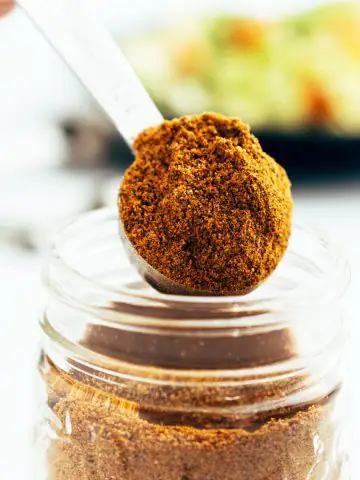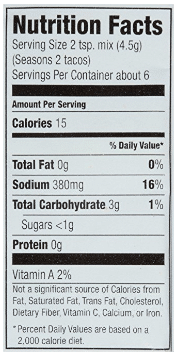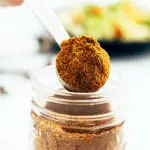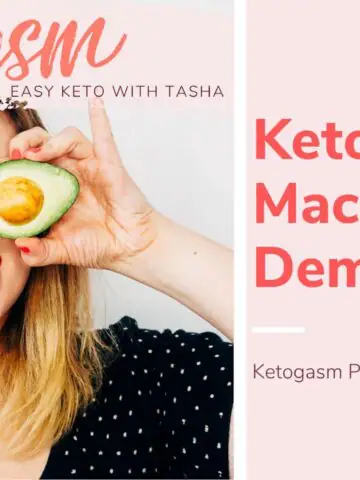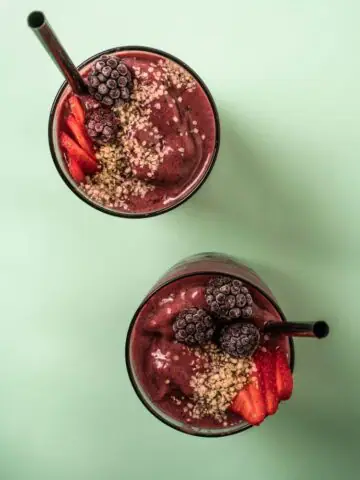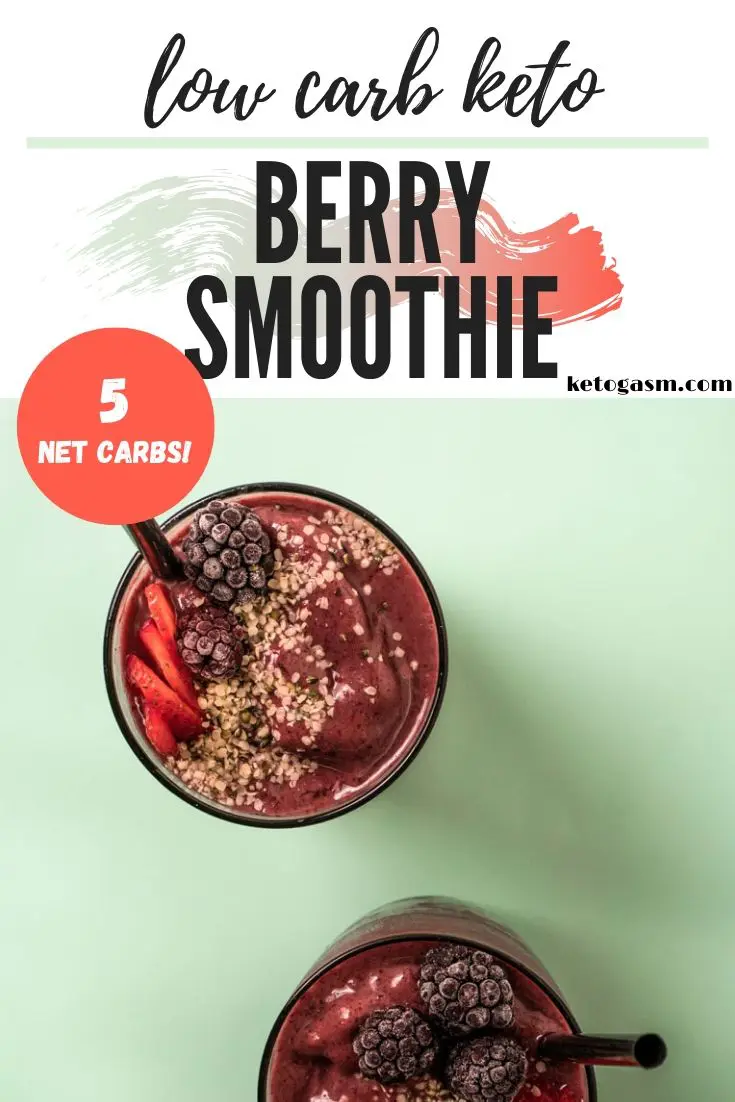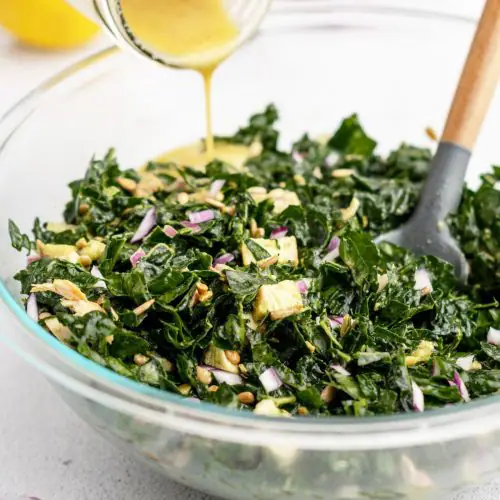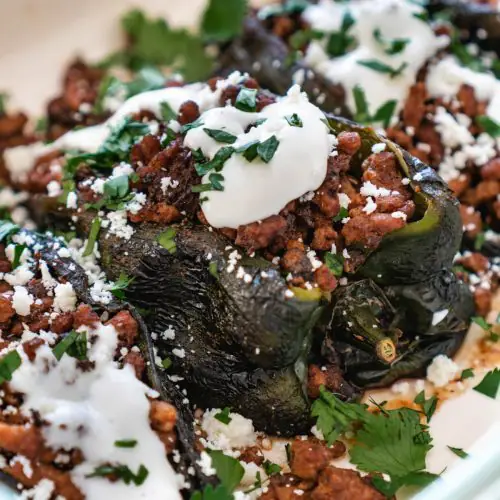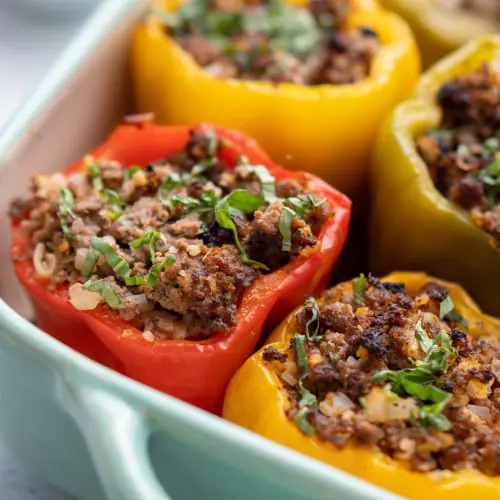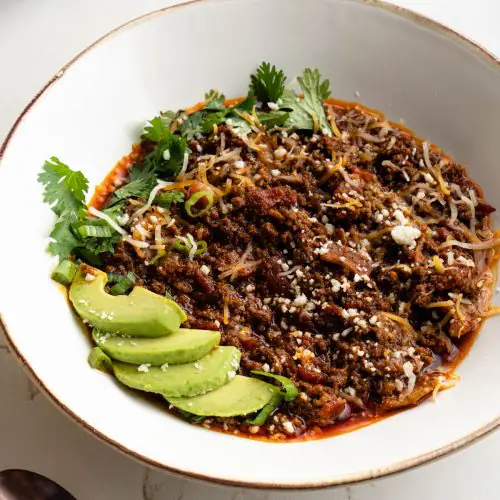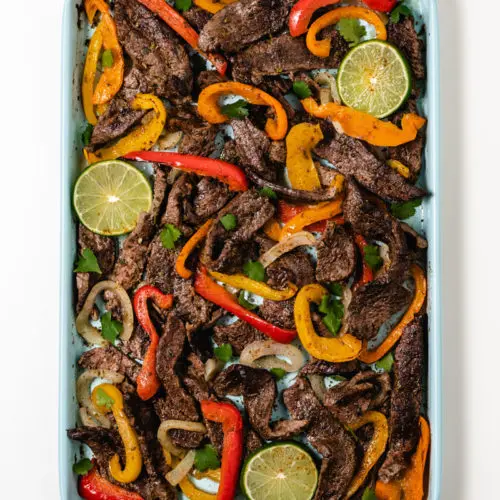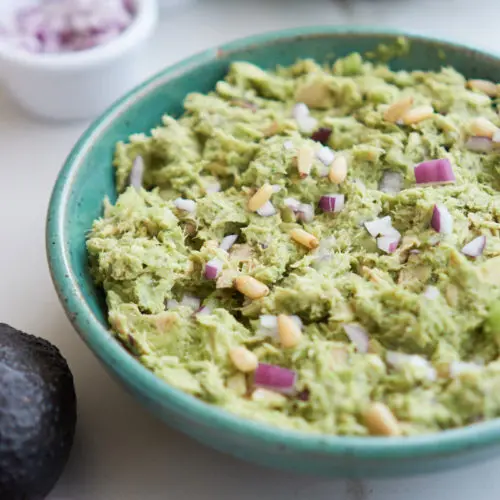This low-carb keto taco seasoning mix is delicious, quick, and just as convenient as the pre-mixed commercial seasoning packets you'll find at the grocery store. This recipe gets two thumbs up from keto dieters all over the world for two main reasons. One, it tastes excellent. And two, it's not loaded with sugar, starch, or fillers, unlike its store-bought counterpart.
That's right––just pure, unadulterated spices to take you to taco meat paradise. It's incredibly flavorful, smells heavenly, and the nutrition aligns with a ketogenic dietary pattern. What's not to love?
Going the DIY route is well worth the (very minimal) effort it takes to whip up a big batch of homemade keto taco seasoning. Not only does it make the best keto taco meat ever, but it's fantastic for burrito bowls and healthy taco salads.
[feast_advanced_jump_to]This recipe was originally published November 18, 2017 but has been updated with new photos, video, and answers to frequently asked questions, including instructions for single batch mix for 1 pound ground beef, bulk batch mix, and how to make taco meat.
🥘 Ingredients
Taking a peek at the ingredients list of a commercial taco seasoning packet reveals some of the primary spices and expected flavors (not to mention the additives that you're probably trying to avoid).
The main ingredients in taco seasoning include:
- Ground cumin
- Chili powder
- Garlic powder
- Onion powder
- Paprika
- Salt
Sea salt, Kosher salt, Himalayan salt, or table salt are all acceptable––use what you prefer.

🧪 Variations
You can also add in extras or make swaps if desired to suit the dish you'll be using it in.
Standard paprika is fantastic if you're going for a traditional flavor profile, but opting for smoked paprika adds a subtle layer of complexity with smoky undertones.
Oregano is a popular herb that works well in taco seasoning to add an earthy, peppery flavor with a beautiful touch of color.
Black pepper is another spice that makes a great addition to the mixture if you're looking for a sharp flavor with a bit of extra bite.
For a spicy version, consider mixing in cayenne or ground chili peppers.
These spices are all keto-friendly and can add to the complexity of your planned dish. Don't be afraid to play around with the quantities or new herbs and spices to switch things up, and leave a comment down below if you find a keeper!
🥄 Single batch
If you're running low on spices, the single batch recipe is perfect for one pound of meat. It's also an excellent place to start if you want to test the recipe before committing to a bigger batch or trying out variations.
In a small mixing bowl, combine the following:
- 1 teaspoon ground cumin
- 1 teaspoon chili powder
- ½ teaspoon garlic powder
- ¼ teaspoon onion powder
- ¼ teaspoon salt
- 1/12 teaspoon paprika (a decent-sized pinch will do if you don't have a measuring spoon this small)
This mix is ready to use for browned meat or other taco-flavored dishes.
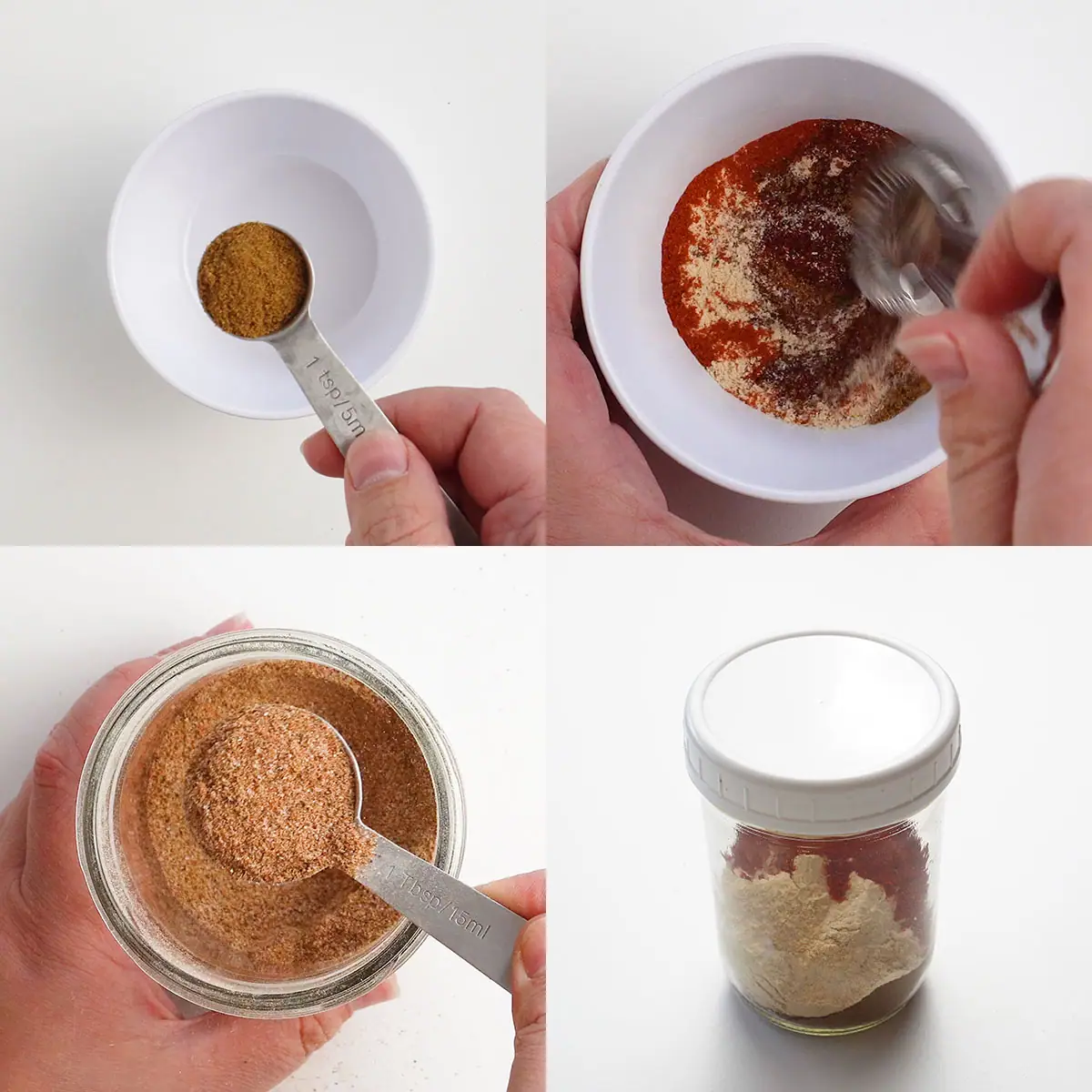
⚖️ Bulk batch
If you have enough spices to go around, I recommend making a big batch of taco seasoning. The bulk recipe is a make-ahead time-saver––just as convenient as the store-bought taco seasoning packets but without all the sugar!
We're using all the same ingredients as before, just scaling the recipe up.
The big batch recipe makes 12 tablespoons of taco seasoning mix. However, you can adjust the scale if you'd like in the interactive recipe card below.
To keep things simple, use a storage container with a lid, like a mason jar.
Add the following to your container:
- ¼ cup ground cumin
- ¼ cup chili powder
- 2 tablespoons garlic powder
- 1 tablespoon onion powder
- 1 tablespoon salt
- 1 teaspoon paprika
Secure the lid and shake until the spices are well mixed. The seasoning is ready to use or store for later use.
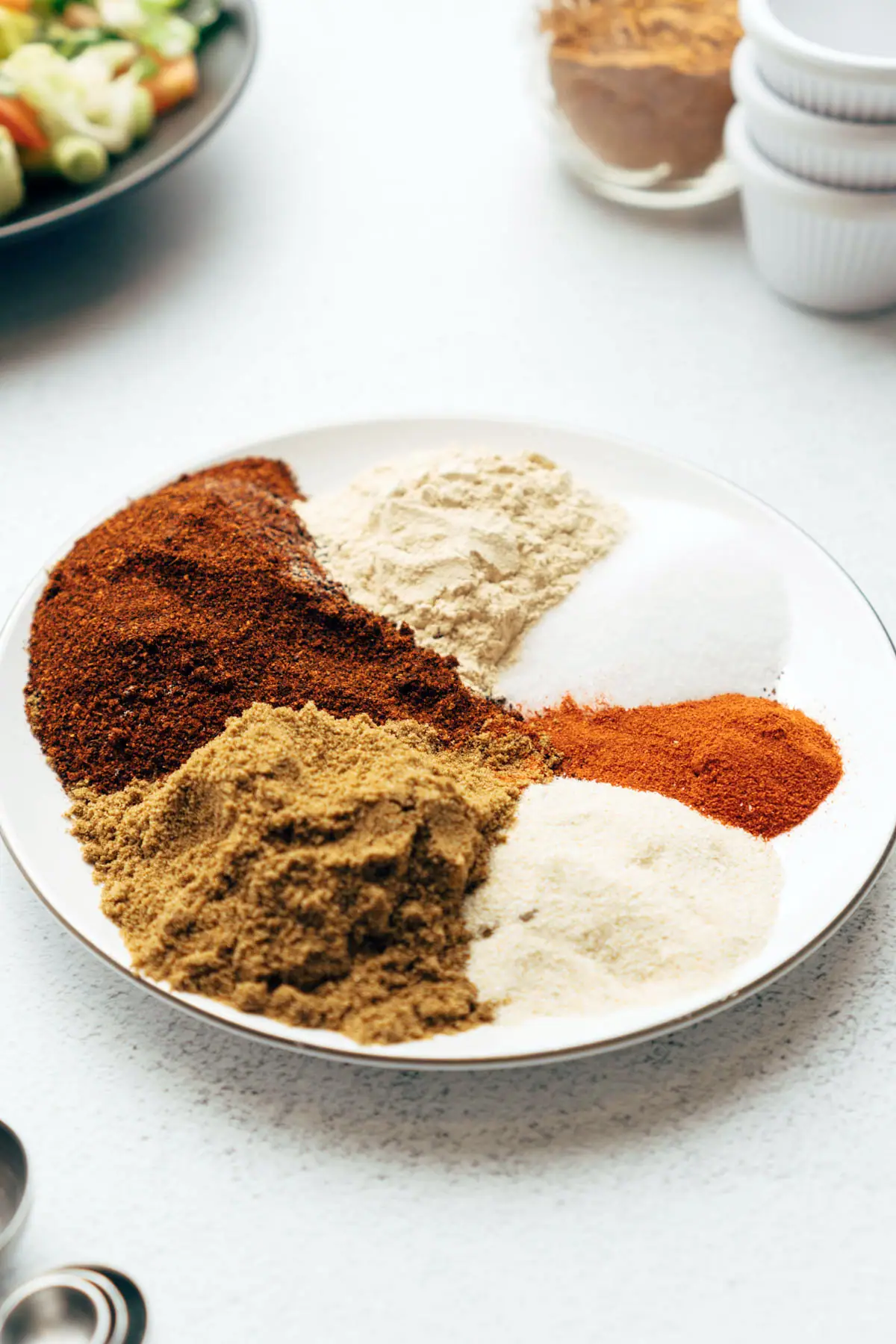
📦 Storage
Spices are considered a shelf-stable product, meaning they have a naturally long shelf life and don't expire in a way that affects food safety if stored properly. However, the flavor tends to decline over time.
To keep the flavor of your spice mix fresh, store in a sealed, air-tight container in between uses for up to 1 to 2 years.
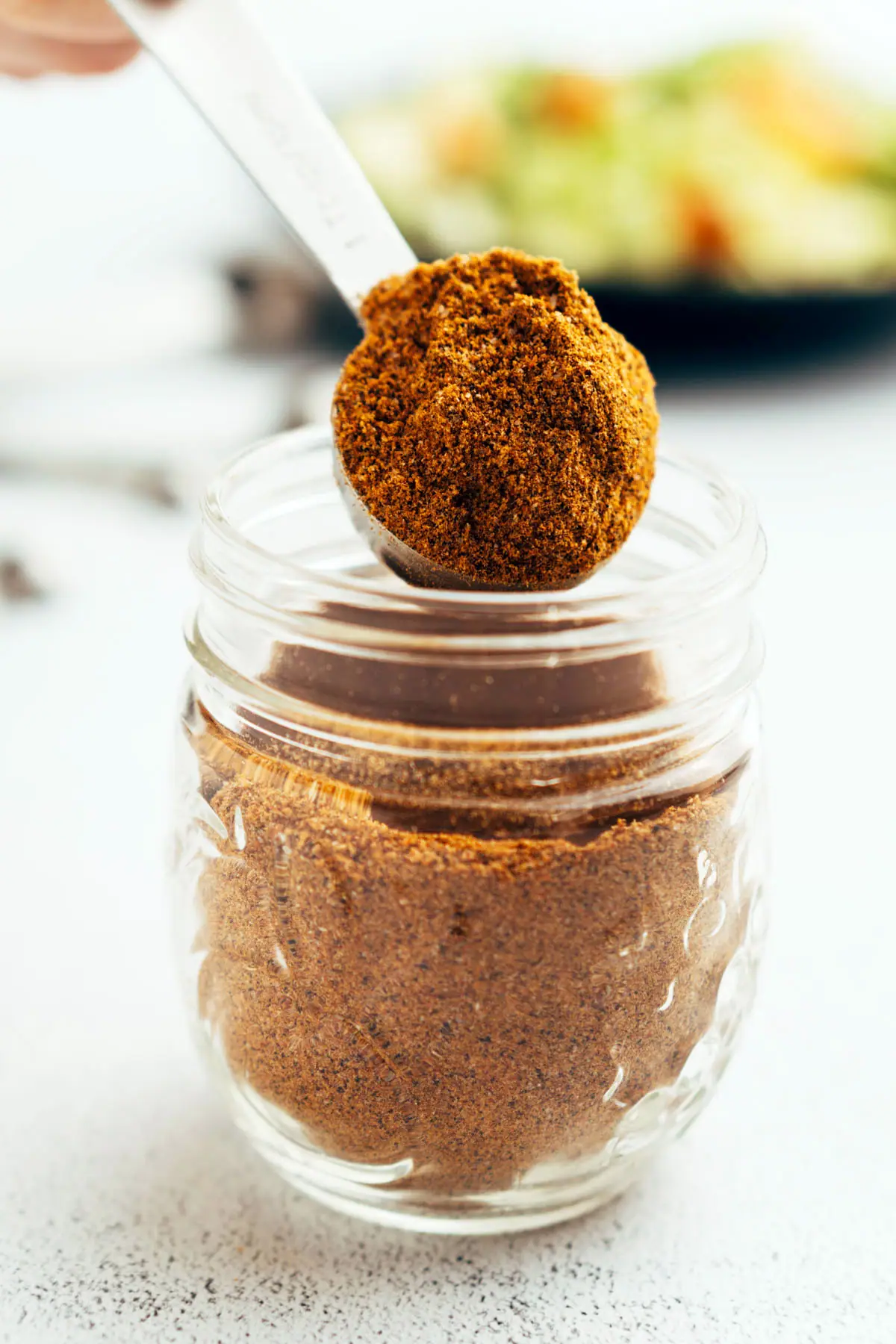
🌮 Taco Meat
To make keto taco meat, brown your meat in a saute pan over medium heat and break into smaller pieces as it cooks.
There may be a good amount of fat that renders out, depending on the protein you choose. Once the meat has browned, drain most of the fat from the pan.
Add one tablespoon of taco seasoning for each pound of meat used.
Add ¾ cup water to the pan.
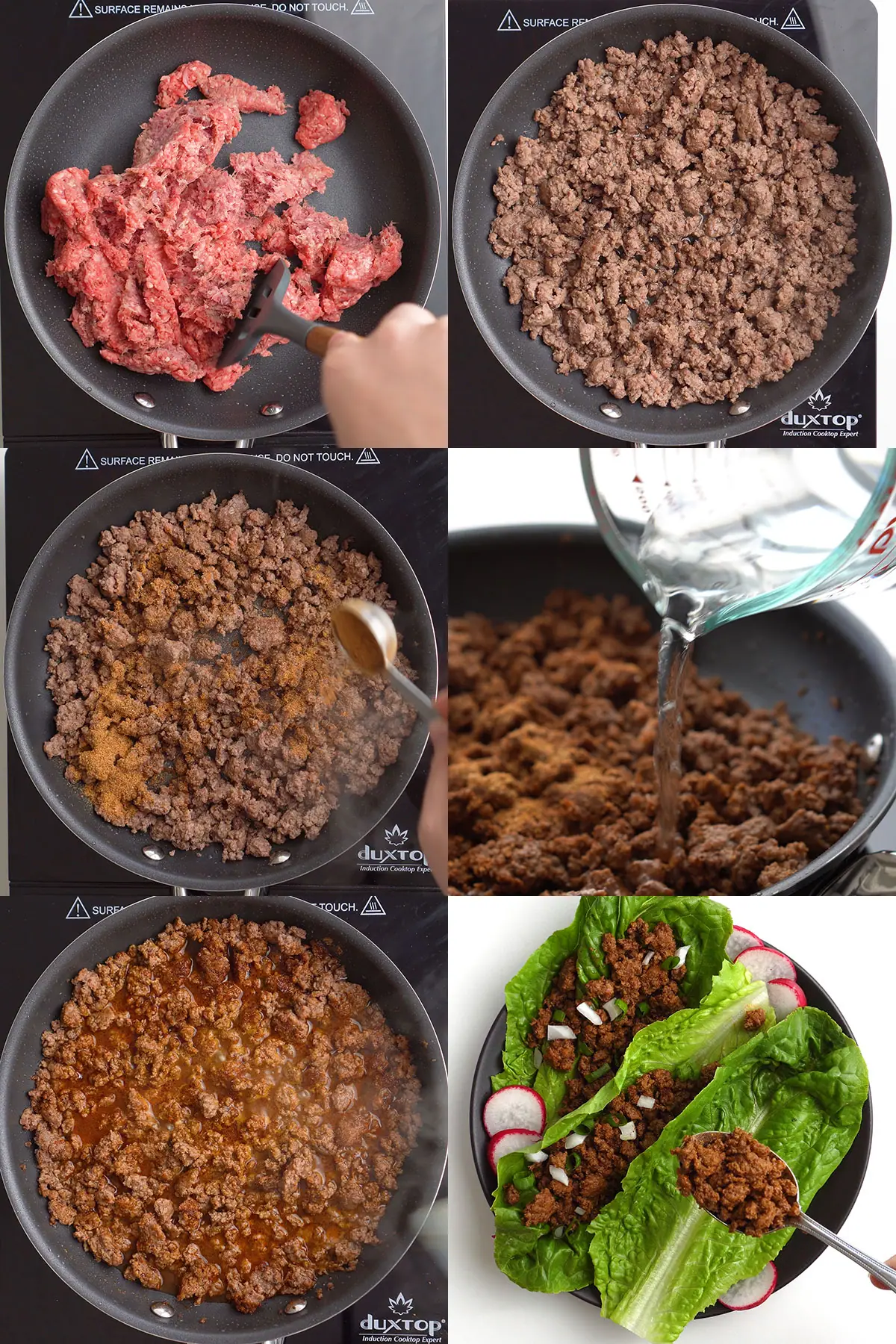
Stir ingredients to evenly distribute the seasoning and bring the mixture to a boil, continuing over medium heat.
Simmer for 3-4 minutes, or until the liquid cooks down into a thicker sauce, then remove from heat.
Now you have rich, flavorful taco meat that's ready to serve immediately or store for later use.
You can use it on keto tacos, lettuce wraps, soups, casseroles, burrito bowls, meal prep, you name it. The possibilities are endless!
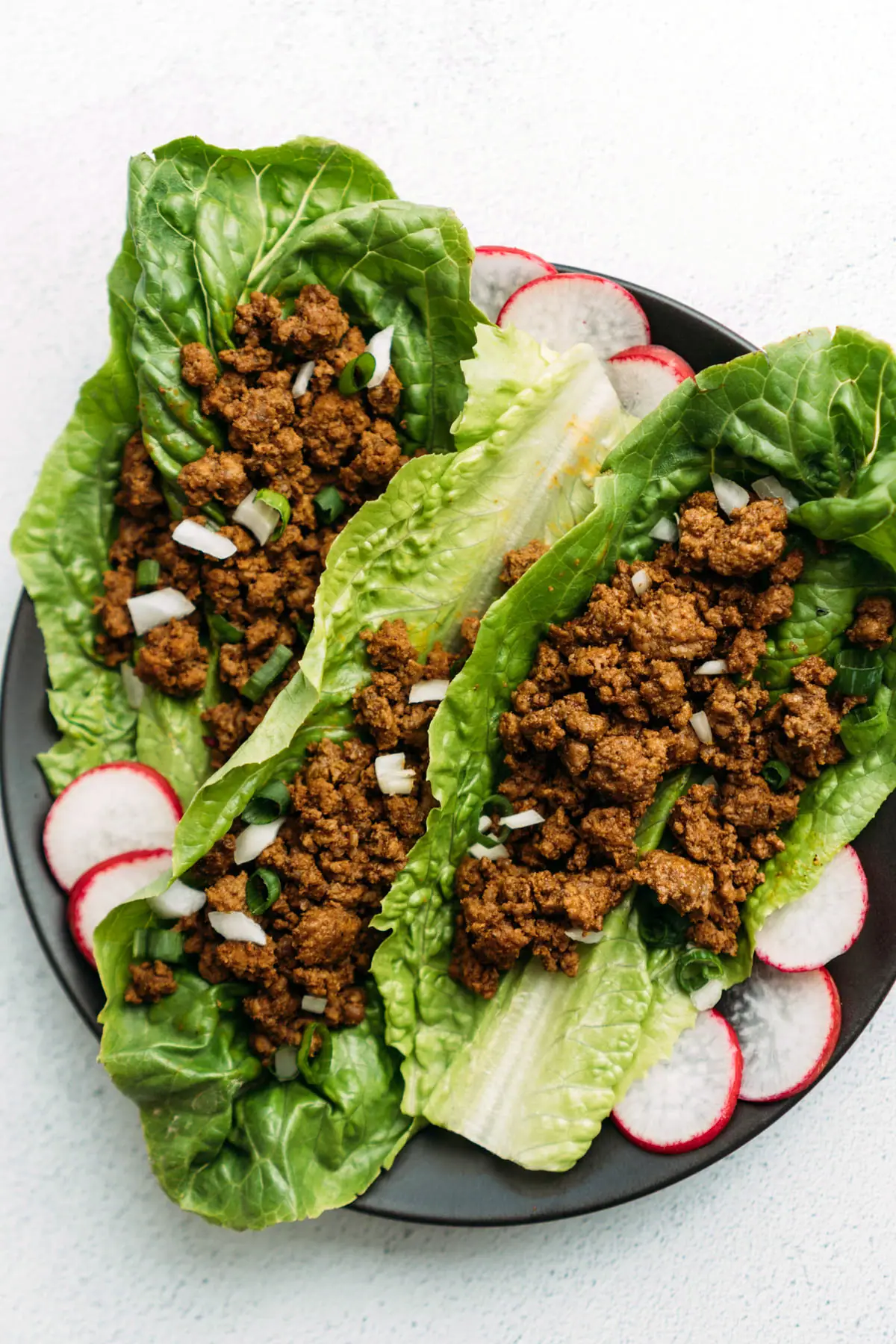
❓FAQ
This recipe works great for keto taco meat! For best results, use one tablespoon of seasoning mix per pound of meat or protein of choice.
One tablespoon of the homemade seasoning mix can be used as an equivalent replacement for a 1-ounce commercial packet.
While ground beef is the most popular choice, ground chicken, turkey, or pork are all great options for omnivores.
If you don't have ground meat on hand, you can season chopped or shredded meat with excellent results. Just be sure to brown or cook the meat before adding the seasoning mix.
For the plant-based crowd, extra-firm tofu can be used in place of animal protein while still keeping carbs relatively low. Cauliflower florets can also make a tasty taco meat replacement!
It depends. Store-bought taco seasoning packets are loaded with sugar and starch, increasing the number of carbs per serving. This has the potential to add up if used in large quantities, which may negatively influence ketosis. These high carb ingredients are best kept to a minimum when eating a ketogenic diet.
When you make your seasoning mix at home, you can omit the ingredients that boost your carb count and use only low-carb herbs and spices to ensure it is keto-friendly.
A good rule of thumb is to avoid pre-mixed seasoning packets and use a homemade recipe instead.
For the keto taco seasoning recipe, one tablespoon has only 2.5g net carbs.
When used for taco meat, these carbs are distributed throughout an entire pound of meat or protein of choice. That means you will have less than 1 net carb for a quarter pound (4 oz./113g) serving size of the seasoned meat.
Net carbs for keto taco meat serving = 2.5g / 4 = 0.63g
Let's compare that to the popular commercial brands, McCormick and Old El Paso.
McCormick Original Taco Seasoning Mix nutrition label lists 3g carbs per serving. Many incorrectly assume a serving size is an entire packet, but the label specifies there are 6 servings per 1-ounce packet. This yields a whopping 18 grams of carbohydrate per packet.
3g carbs x 6 servings = 18g carbs
Depending on how you use the seasoning and how big your portions are, this could significantly impact your daily carb count.
The Old El Paso Original Mix has the same nutritional values and serving sizes.
If your goal is to keep carbs low to support ketosis, consider avoiding the commercial blends and stick to a tried and true homemade keto taco seasoning mix.
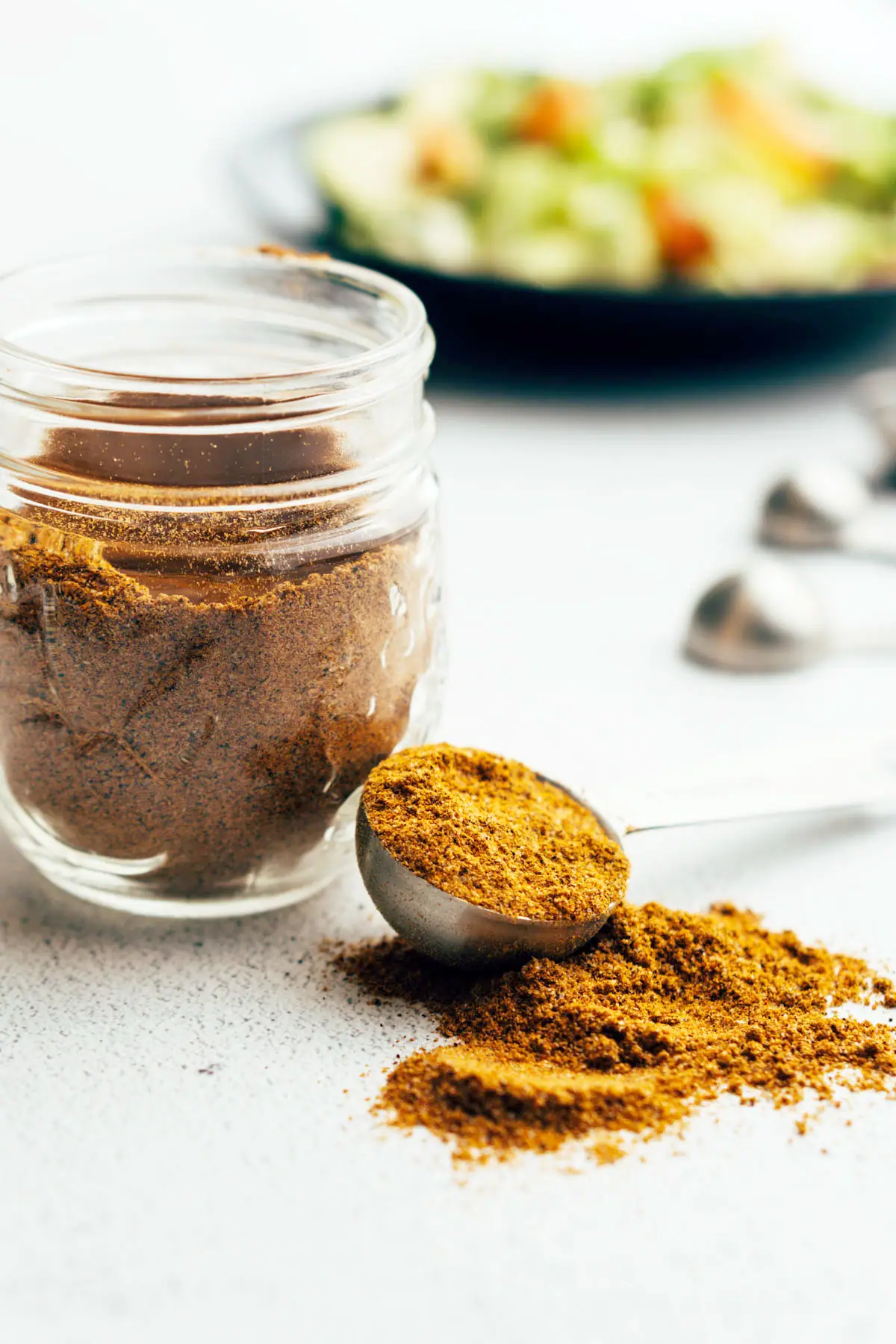
📖 Recipe
Keto Taco Seasoning Recipe
Equipment
- Measuring cups
- Measuring spoons
- Mason jar with lid
Ingredients
- ¼ cup ground cumin
- ¼ cup chili powder
- 2 tbsp garlic powder
- 1 tbsp onion powder
- 1 tbsp salt
- 1 tsp paprika
Instructions
Taco Seasoning Mix
- Combine cumin, chili powder, garlic powder, onion powder, salt, and paprika in a lidded storage container.
- Secure lid on storage container and shake until well mixed.
- Store with lid sealed between uses.
Taco Meat Option
- Heat a large saute pan over medium heat. Add ground meat to pan and break into smaller pieces as it cooks.
- Once the meat has browned, drain any excess fat that has cooked off from the pan.
- Sprinkle the seasoning mix over the cooked meat, adding one tablespoon of taco seasoning for each pound of meat used.
- Add ¾ cup water to the pan and stir ingredients to evenly distribute the seasoning. Bring the mixture to a boil and continue cooking over medium heat. Simmer for 3-4 minutes, or until the liquid cooks down into a thicker sauce, then remove from heat.
- Use immediately in your favorite keto taco recipes or store covered in refrigerator.


